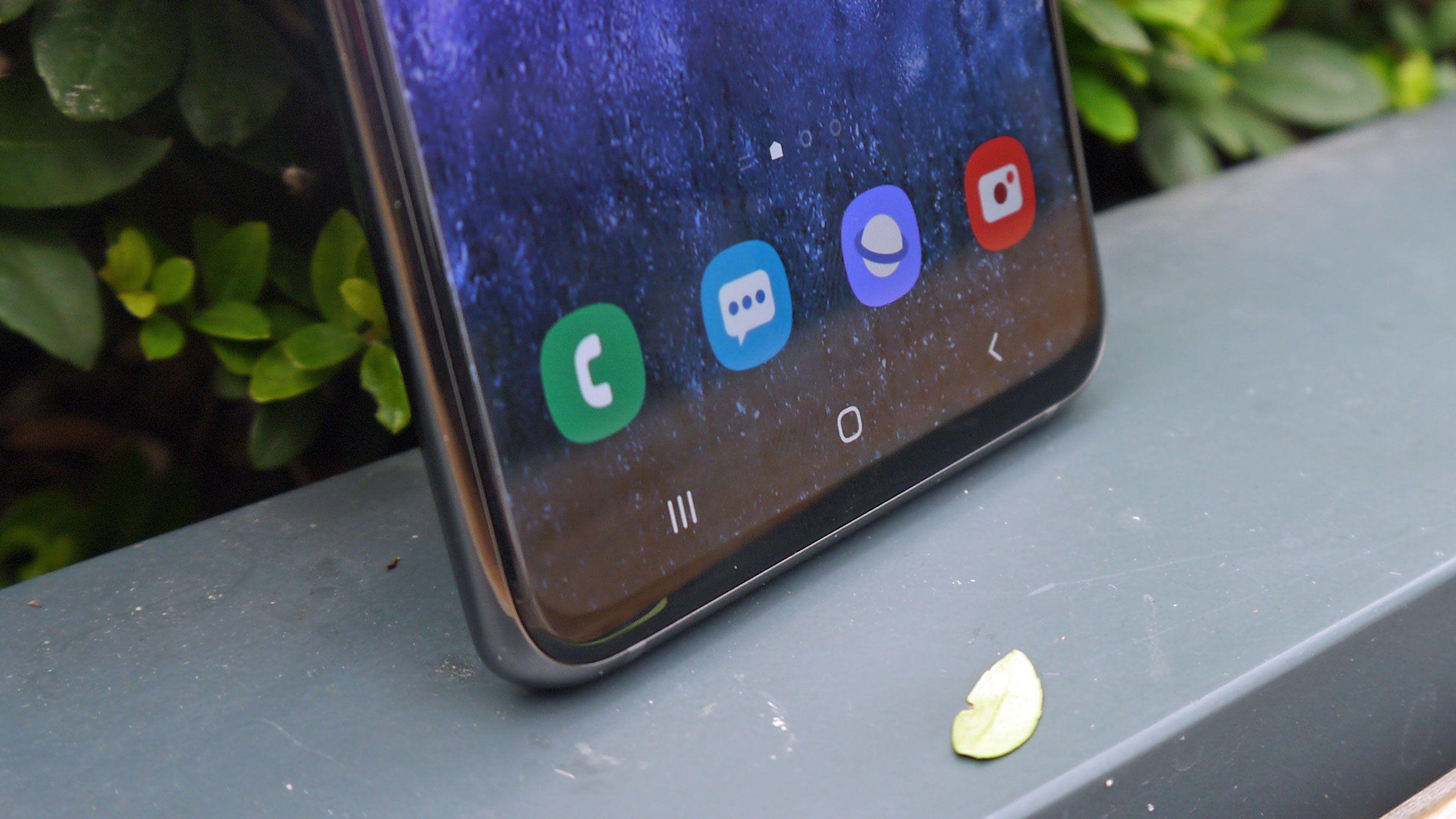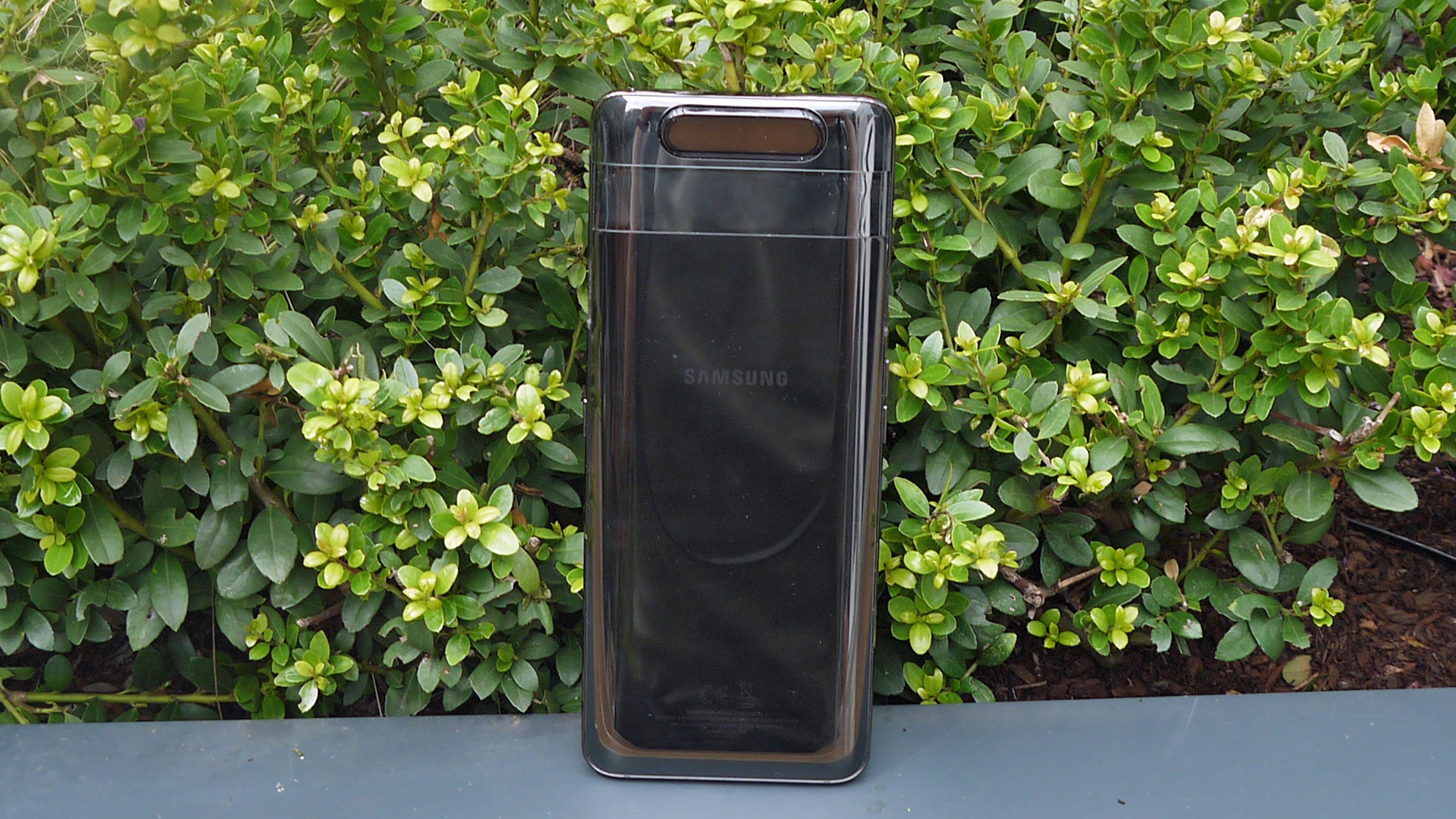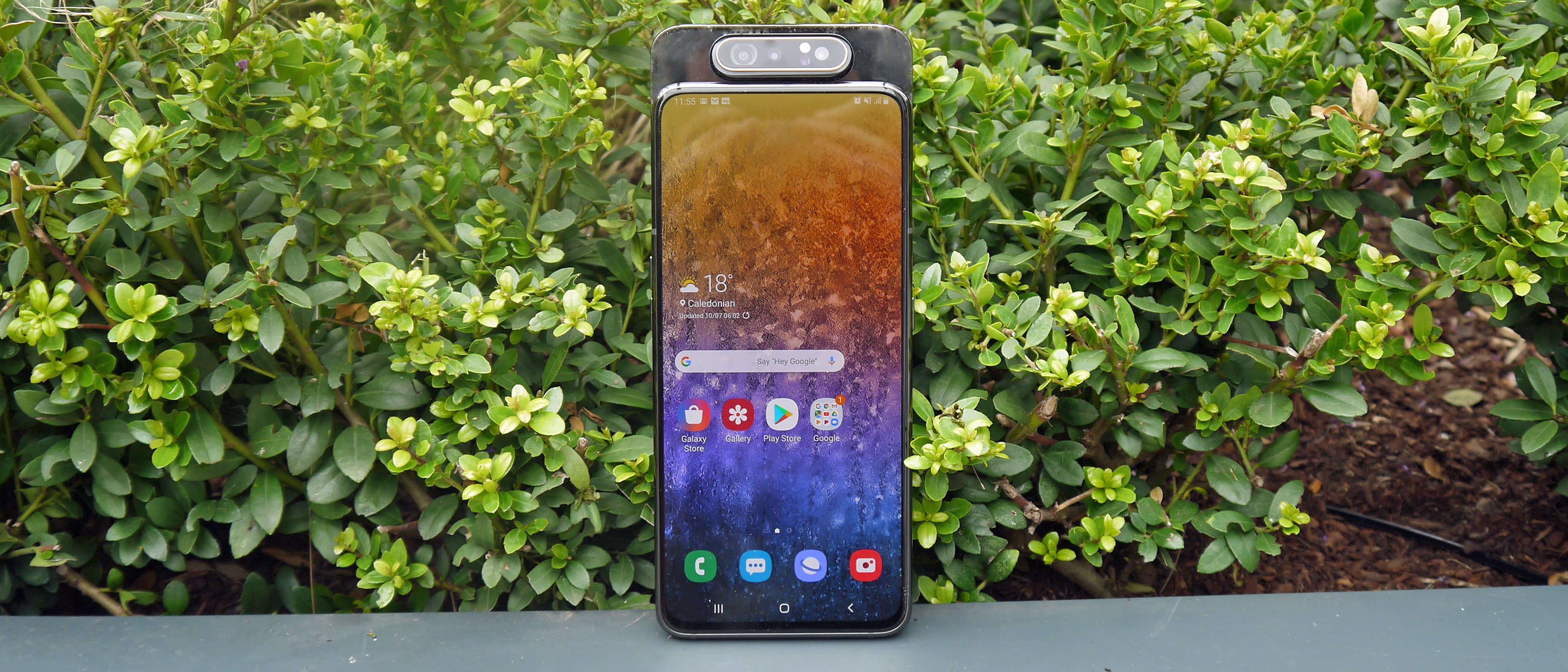Why you can trust TechRadar
Interface and reliability
The Samsung Galaxy A80 comes with Android 9, the most recent Android operating system, with Samsung’s One UI laid over the top.
As with many custom user interfaces, the biggest change over stock Android is the aesthetics, as One UI goes for a pale or muted color scheme, rounded square icons, and a bigger emphasis on widgets than other UIs. We found it looks a little babyish, but it’s certainly not as garish or lurid as certain other UIs (we’re looking at you, Huawei P30).
On top of that, Samsung’s emphasis on customization, in terms of widgets, icon size, and navigation options, feels like a return to what originally made Android a lot more appealing than iOS, and it let us make the device feel truly ‘ours’.
We certainly got a lot of time to appreciate the appearance of the software, as we spent ages staring at it as we waited for various things to work. This is because the A80 feels rather slow to use. You can probably blame the chipset for that, as we’ll get into later.
Opening and closing apps took a little longer than on other phones, especially the camera app, which the device seemed reluctant to open. Turning the handset on also took a lot longer than we’d like it to.
This wasn’t helped by the unreliable fingerprint reader, which more often than not didn’t recognize our thumb when we tried to turn the device on, and we’d often have to try to open the phone multiple times before we eventually got in.
We always did get in, in the end, so we never had to resort to just using our PIN like in the Sony Xperia 1, but it still made logging into the handset a considerable pain.

Another issue we had with the phone is that data frequently wouldn’t work if we left it on a while. This was easily fixed by switching it off then on again, but it was still a minor annoyance when it happened, as we often wouldn’t notice and didn’t catch messages as a result.
One last nuisance? The emoji keyboard is much harder to access in the Galaxy A80 than it is in basically every other phone, as you have to dive into a second menu in the keyboard. For a handset targeted towards younger audiences, this doesn’t make much sense at all.
Music, movies and gaming
One of the main draws in having a display with no notch, is the screen is great for watching content and playing games, so it’s fitting therefore that gaming on the Samsung Galaxy A80 is surprisingly fast.
As we’ve said the Galaxy A80 felt a little slow to use, but when we loaded up a game this sluggish performance vanished – on PUBG Mobile the game defaulted to the highest graphics settings, ARK: Survival Evolved ran without its usual laggy gameplay, and many more of the demanding games we played could well have been running on a premium phone.

This tells us the handset is optimized for gaming, and it’s one of the few ways in which the phone feels at all premium.
The Galaxy A80 is also great for viewing movies and TV shows thanks to its high-quality screen, however we had the usual problem that crops up when the volume rocker and power button are on opposite sides of the device – when you’re leaning your handset on a surface, either you’re accidentally turning the screen off, or changing the volume, which is hugely irritating.
There’s also the problem of the handset having a single down-firing loudspeaker, which can easily be covered up if you hold the phone in the wrong way.
In fact, loudspeaker might be the wrong word for the A80’s speakers, as the max volume is surprisingly low when playing music out loud.
When we turned the volume to its max and put the phone in the center of a living room, we didn’t have to walk too far for the details of the song to be inaudible. Music quality isn’t great either, but that’s to be expected for such a light speaker loadout.
The main issue with using the Galaxy A80 as a music device, however, is the borderline dysfunction lock screen widget, which makes it excruciating to use for playing music on the go.
Over the course of a one hour walk, during which we put the A80 in our pocket and listened to music downloaded from Spotify using Sony WH-1000XM3 headphones, we had the following problems: the volume increased to max levels without our input, the music would pause for no reason, when we tried to skip a single song multiple would skip, sometimes the widget buttons wouldn’t register our touch so we couldn’t skip songs (or return back to songs that had been skipped), and then at the end of our journey when we wanted to pause the song to stop the music playing altogether, the music would pause for a nanosecond before starting again, no matter how many times we told it to stop – it was, all in all, a hugely frustrating experience.
Most of these issues were replicated in other settings, and it dissuaded us from using the Galaxy A80 as a portable music player.
Performance and benchmarks
The Samsung Galaxy A80 runs on a Snapdragon 730 chipset, which is one of Qualcomm’s most recent processors geared towards the mid-range market.
It’s not going to blow your socks off with its processing power, but you could do a lot worse in terms of internals – at least, in theory.

In practice, the Galaxy A80 feels slow to use, and it could well be because of this mid-range chipset. When we put the handset through a benchmark test, it returned a multi-core score of 6,903 – which is decidedly middling.
In comparison, the Samsung Galaxy S8, which is two years older than the A80, scored 6,630, which is one of the closest scores. But if you’re looking for something released around the same time as the A80, which costs roughly the same, you’re going to consider the Huawei P30, which trumps the A80 with a score of 9,730.
So you’re not getting great processing power for the price – and it shows. As we’ve previously stated, the phone just feels slow, especially when using the camera app, and you can find a snappier smartphone experience in many of the A80’s competitors.
Current page: Anything else I should know?
Prev Page Battery life and camera Next Page Verdict and competition
Tom Bedford joined TechRadar in early 2019 as a staff writer, and left the team as deputy phones editor in late 2022 to work for entertainment site (and TR sister-site) What To Watch. He continues to contribute on a freelance basis for several sections including phones, audio and fitness.
